Multiply Beautiful Hydrangea Plants For Your Garden
Here’s a super easy way to multiply your favorite Hydrangea plants for free: propagate Hydrangea cuttings! Like many garden lovers, I can’t get enough Hydrangeas because they come in so many beautiful shapes and colors!
Why should you propagate Hydrangeas
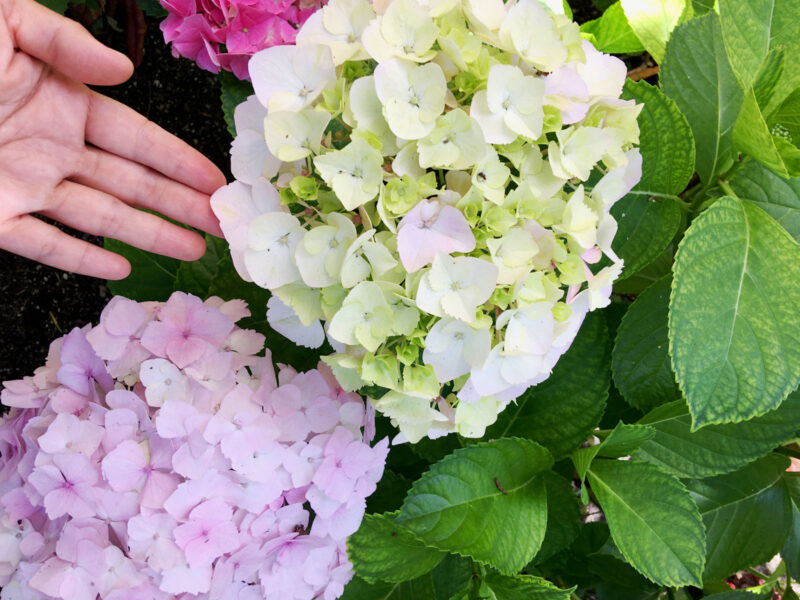
Hydrangeas are a timeless favorite flowering shrub in English gardens and farmhouse country gardens. Just like Fiddle leaf fig and Snake plant, they are easy to propagate, and they also make great gifts for friends who love to grow flowers! Yes we could each buy 50 varieties of Hydrangea flower plants, or get together with some gardening friends to trade and propagate Hydrangea cuttings!
Beautiful Hydrangea varieties
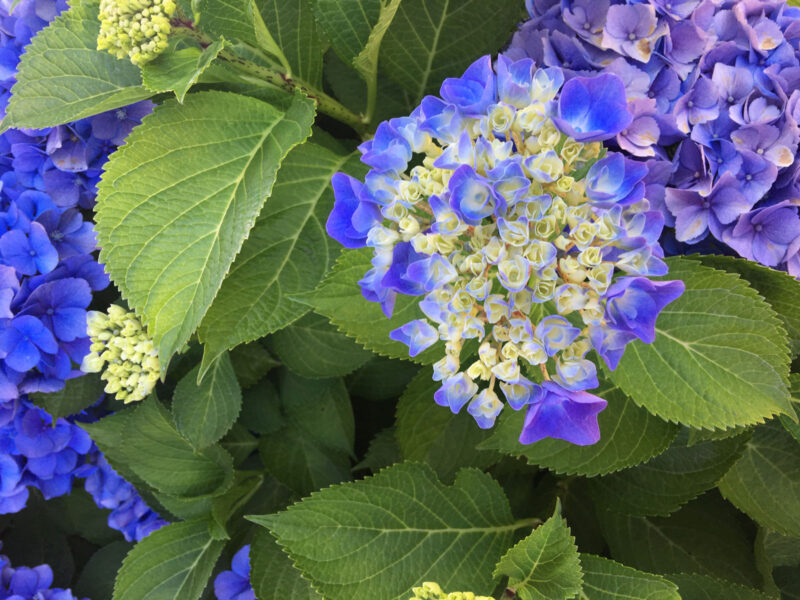
*Some resources in article are affiliate links. Full disclosure here.
All Hydrangea varieties from showy Hydrangea macrophylla, to dreamy Hydrangea arborescens are super easy to propagate from stem cuttings. Our Hydrangea cuttings we propagated last summer are beginning to bloom this year already! They grow beautifully in pots too, which makes them great for patio landscaping.
When is the best time to propagate Hydrangea cuttings?
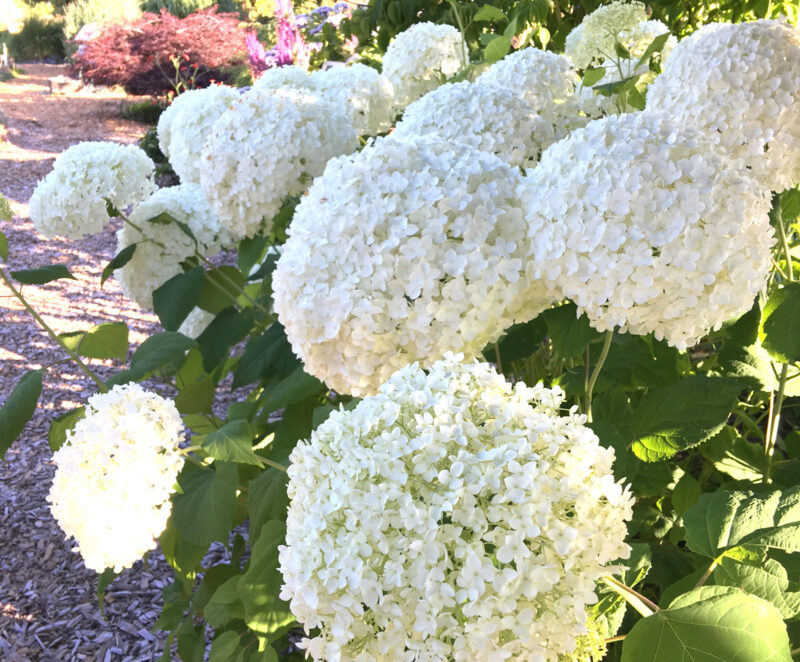
The best time of year to take Hydrangea stem cuttings is from spring when the plant is leafing out, to late summer when the leaves are still lush and green. If you live in a warm winter climate such as coastal California, you can even propagate Hydrangeas in early fall. Hydrangeas are deciduous shrubs, so it’s best to propagate them and give them some time to develop roots before they go dormant in winter.
Hydrangea cuttings
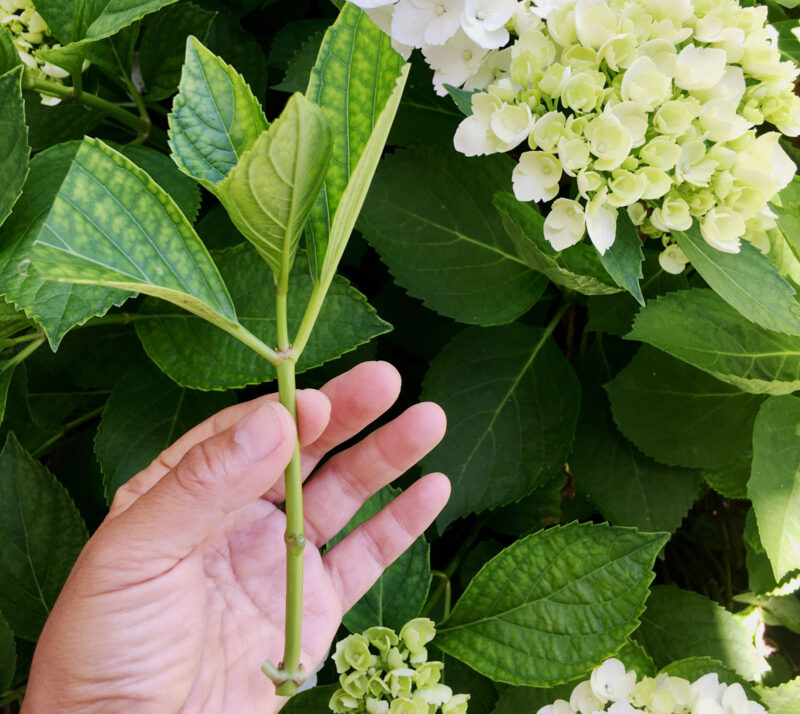
To give your Hydrangea stem cuttings the best chance to root, start with healthy plants free of pests such as aphids or any disease. Both blooming and non-blooming Hydrangea stems can be propagated easily, but I always try to find stems without flower buds first. Don’t let the Hydrangea cuttings dry out during the whole process. Work fast in a shaded area.
How long should a cutting be?
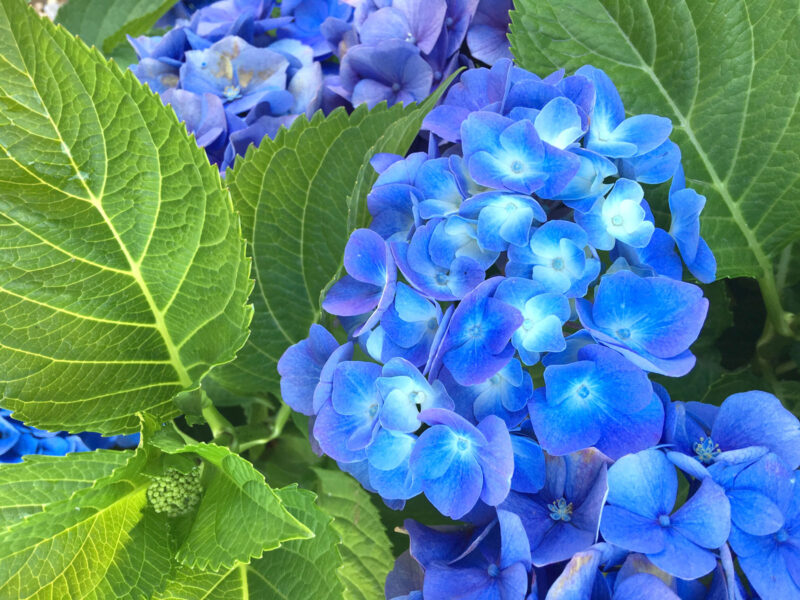
Choose 3″ to 5″ long tender green stems, aka softwood cuttings, which will root more quickly and easily than woody stems. Use a pair of sharp clean pruners or scissors to cut just below a leaf node. The Hydrangea cuttings should each have at least 3 sets of leaf nodes – see photo above.
How to take Hydrangea cuttings
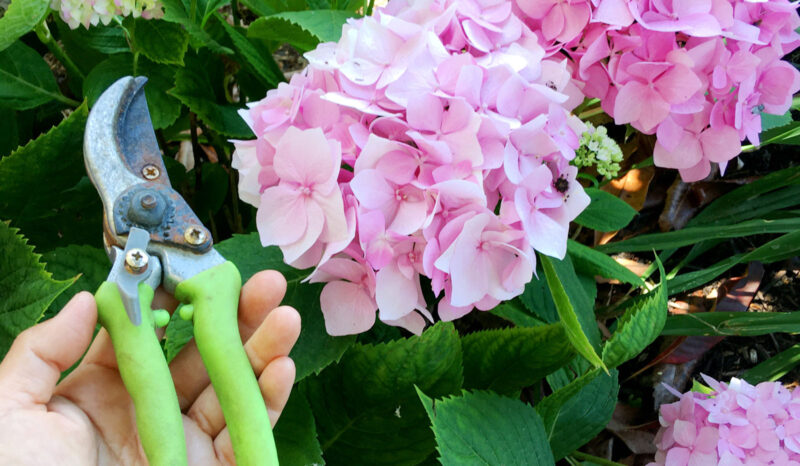
Trimmed all lower leaves until you get to the top set of leaves ( or four leaves if the top two leaves are much smaller than average ) from the stem using a clean sharp pruner. Be very careful not to scratch or damage the main stem.
Do I need to trim the leaves
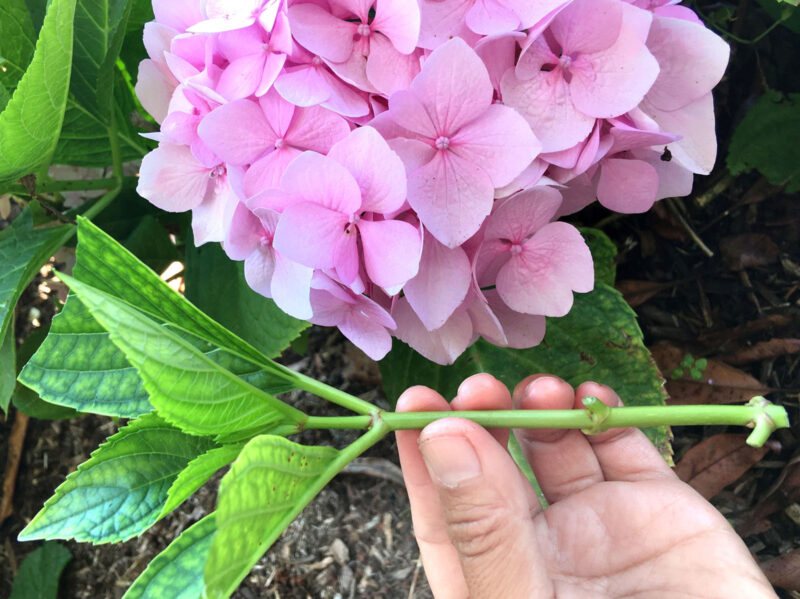
If you are propagating large leaf Hydrangea varieties with leaves 3″ across or larger, trimming the remaining leaves in half will reduce the stress on the cuttings to draw up water. For smaller leaf Hydrangeas, it’s ok to keep the leaves whole.
Do I need rooting powder?
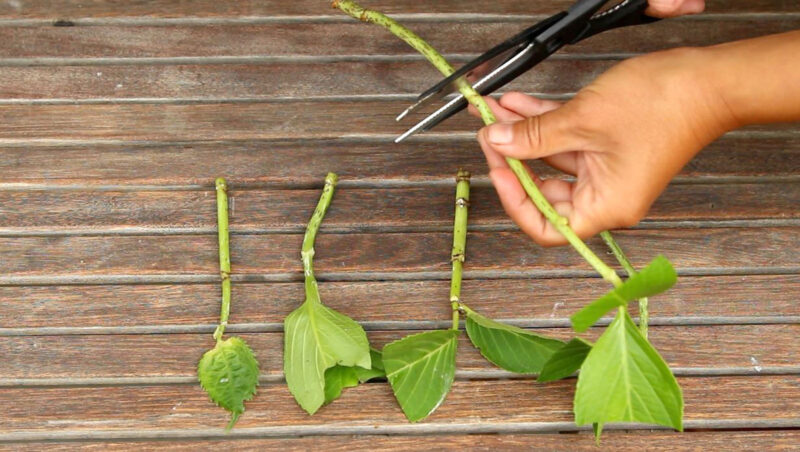
I have found that rooting hormone powder does speed up propagation quite a bit. If you don’t use any rooting powder or gel, no worries, it will just take a little longer. Hydrangea cuttings are so easy to root, especially if you use the “tent” secret shown later. 🙂
How to use rooting powder
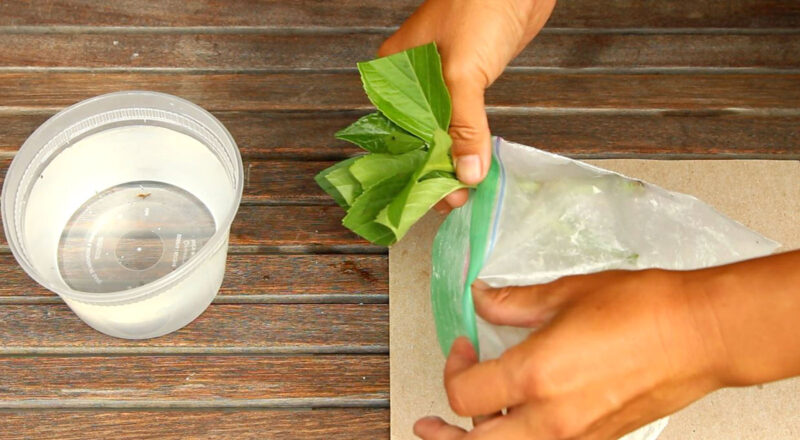
Put some rooting hormone powder in a dry zip-lock bag, dip the cuttings in water, shake off excess water, and put the stems inside the bags. Shake the bag till the stems are coated with rooting powder. I usually keep the bag open for a few hours to let moisture evaporate, and close the bag with the remaining rooting powder for reuse next time.
Root cuttings in pots
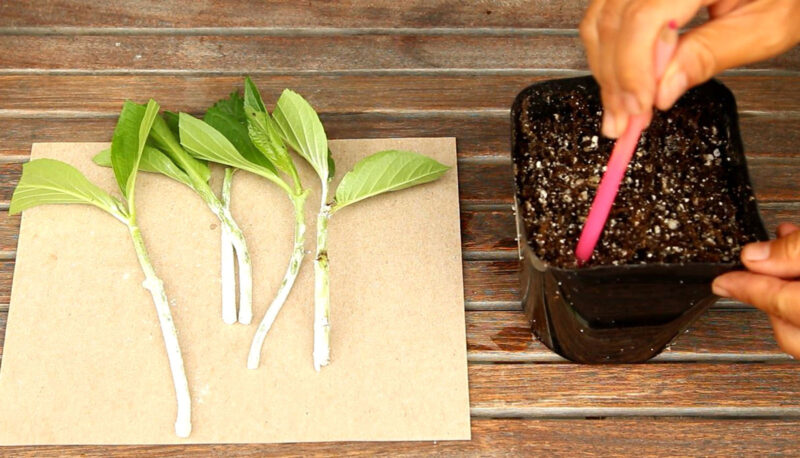
Use a stick or pencil to dip a hole in the damp potting mix, and drop each cutting in a hole. Gently push the soil to secure each cutting. Space the cuttings 1″ to 2″ apart minimum. As you see in the photos above, the goal is to bury at least 1 set, preferably 2 sets of nodes in the soil. Nodes and stems are where new roots will be growing out of!
Rooting medium choices
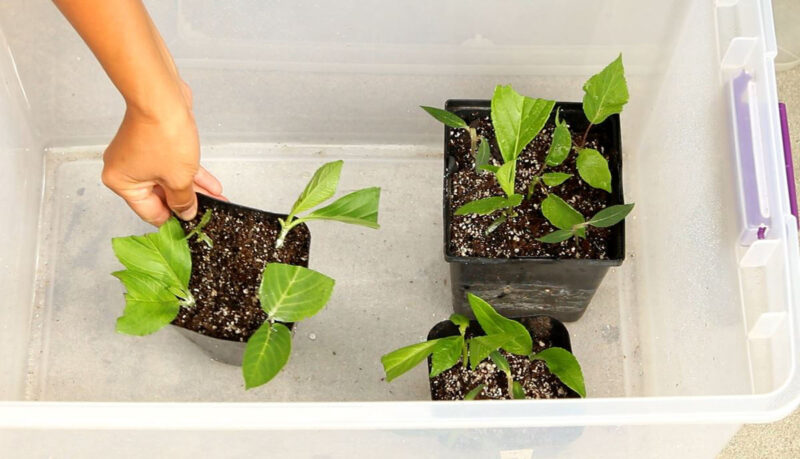
There are several good rooting medium choices. to propagate Hydrangea cuttings. Seed starter soil mix or a good potting soil are both good to use. Do not use garden soil or soil mix with lots of manure or fertilizer content as too much nutrients can cause cutting to rot before they take root. A soil-less mix of 50% peat moss ( soak in in water for 30 minutes before use ) and 50% horticulture perlite also makes a great propagation mix.
Boost success with a simple humidity tent
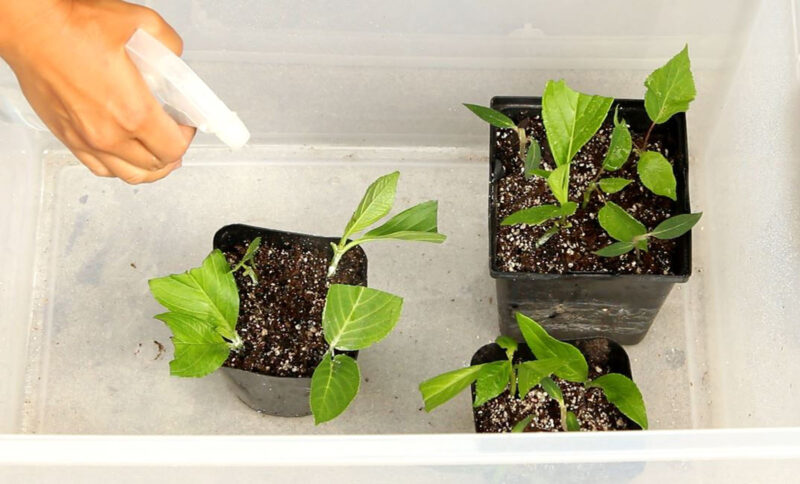
A big 18″ tall clear plastic bin with lid acts like a humid dome / mini greenhouse. After planting the cuttings in moist propagation mix, all you need to do is placing the inside the bin, mist the interior gently, and close the lid.
Check on the cuttings once a week.
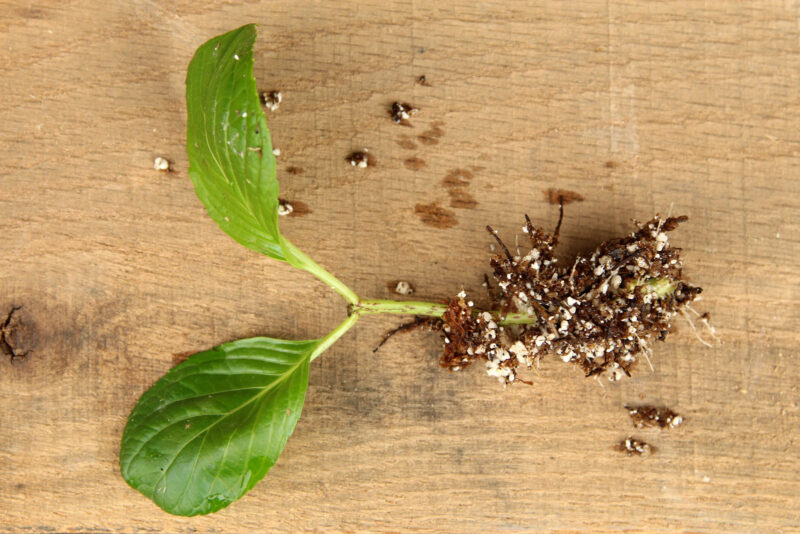
You may need to mist the interior occasionally. If you don’t have a bin, just remember to water often and keep your new hydrangea cuttings moist at all times, but never soggy. IMPORTANT: Keep the bin and / or cuttings in a bright warm place out of direct sunlight. Direct sun will make the tent too hot and kill the plants.
Cuttings begin to grow roots
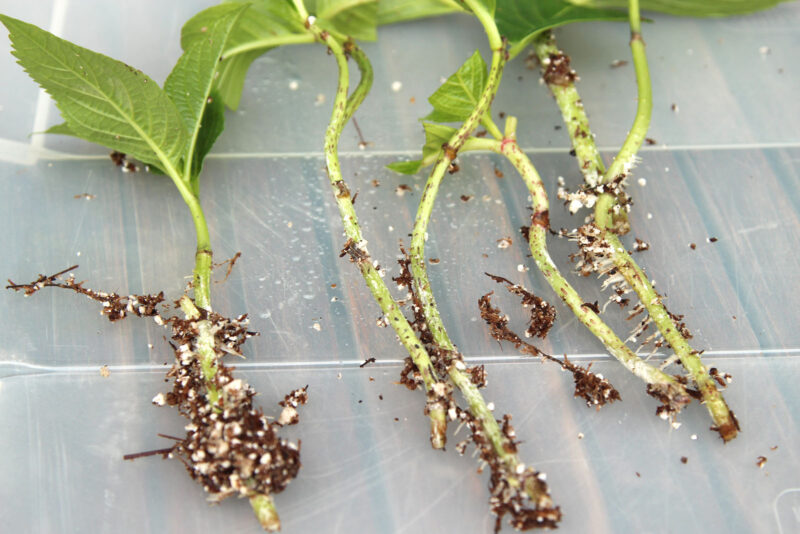
After about ten days, your hydrangea cuttings will begin to form new roots. Don’t disturb them yet! When a healthy root system forms in 4-6 weeks, you can plant these new plants in the garden or a bigger container out of direct sunlight.
Water the cuttings
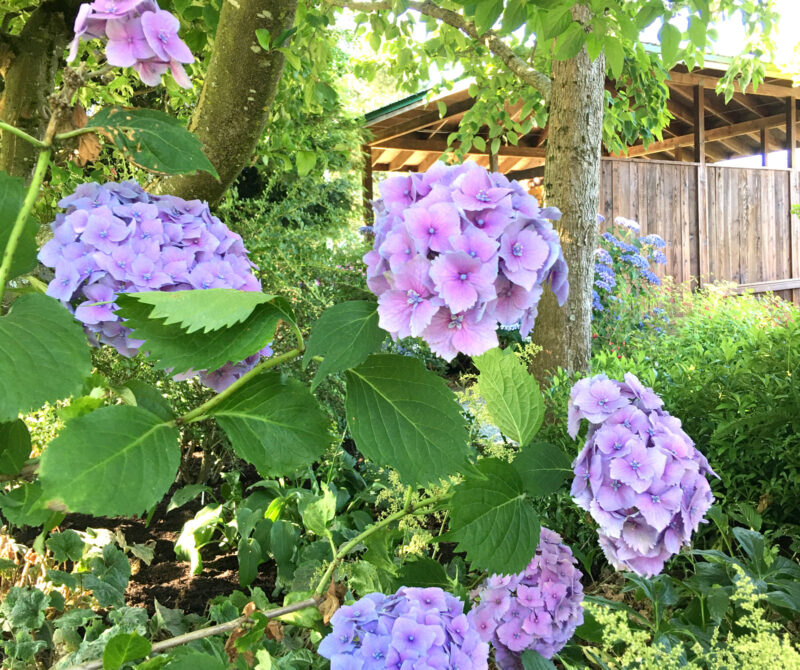
Keep the newly planted cuttings well watered for the first 2 weeks. Once the new plants are more established, they will require less care. Hydrangeas love dappled shade and moist soil.
Grow Hydrangea plants
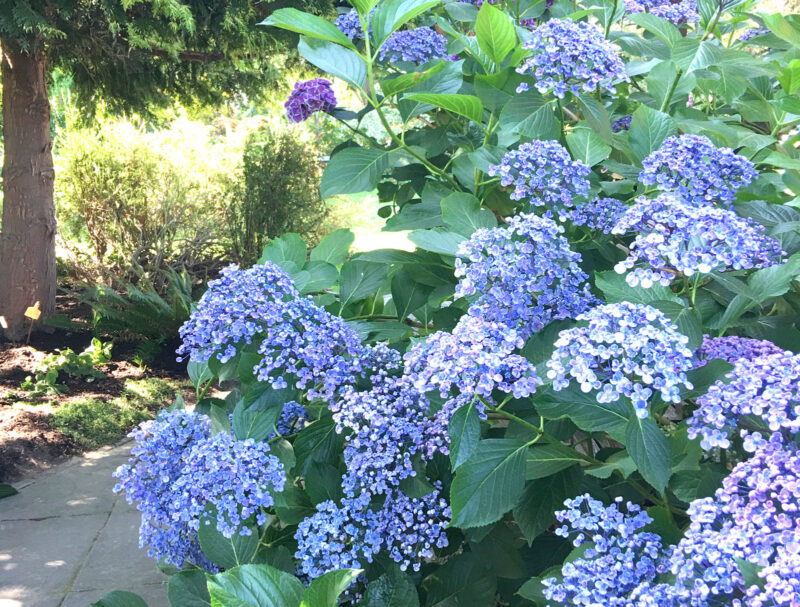
Some morning sun is good for established plants in a garden landscape design. In more cloudy climates like Pacific northwest, Hydrangea shrubs can be planted in full sun. But they still do best in at least some afternoon shade. In dry and sunny Southern California, they thrive as shade garden plants.
Another great propagation method
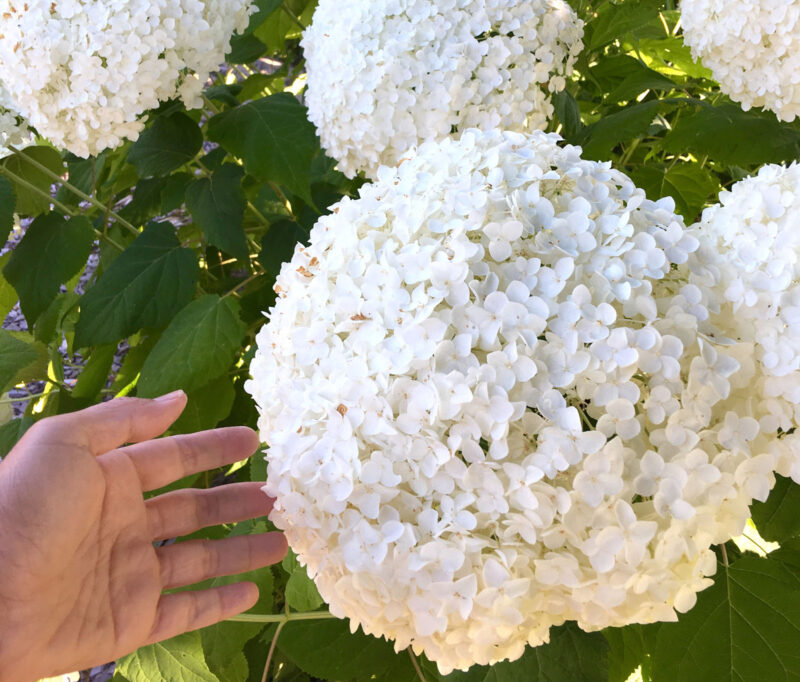
Air layering is a great way to propagate Hydrangeas and many garden plants such as Lavender, Jasmine etc, if they are in your garden ( or your friend’s garden of course!) To learn more about this amazing method, check out our article on best easy ways to propagate roses.
